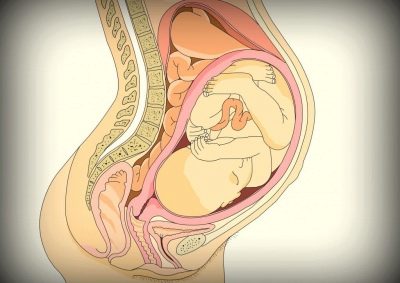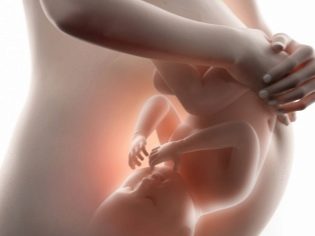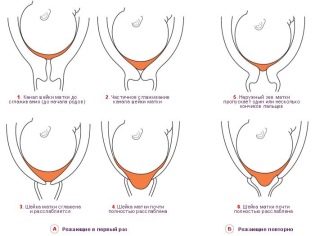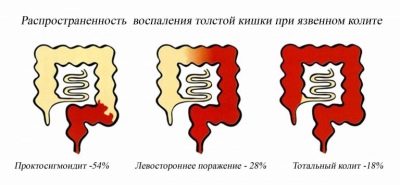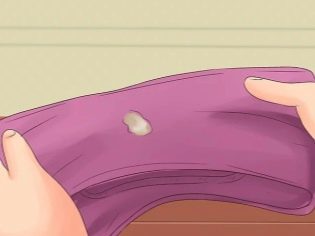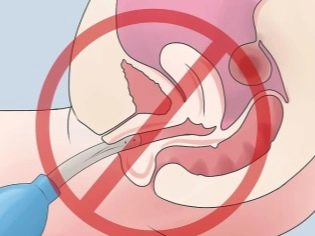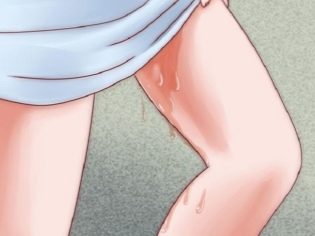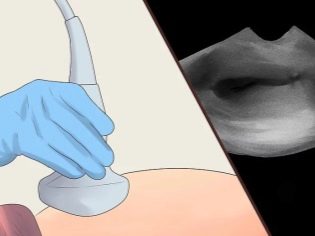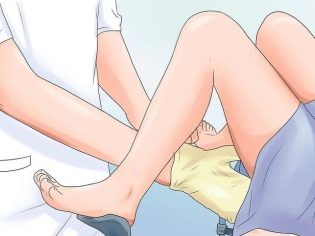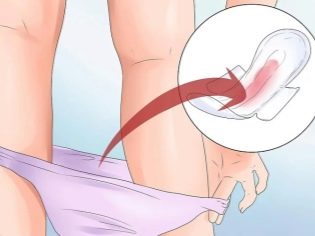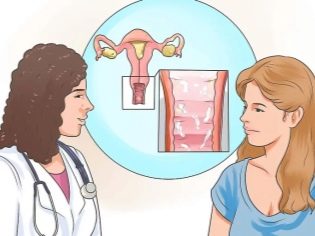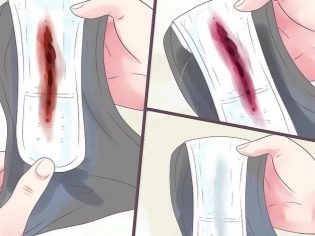40 week of pregnancy: discharge and pain in the abdomen
At 40 weeks of gestation, a woman feels tired and haggard. Various pains become its constant companions. It is the characters of the pain syndrome and secretions from the genital tract that can prompt what is happening.
That can mean pain in the abdomen and unusual discharge at this time, we will tell in this material.
Physiological features
40 week completes the term of carrying a baby. The estimated date of delivery is scheduled for its end. Pregnancy is considered fully term, childbirth can occur at any time. The uterus has increased more than 500 times relative to its initial volume. It weighs about 1300 grams without taking into account the weight of the baby, placenta, water.
This week, the uterus occupies almost the entire abdominal cavity, and the baby in it - all the free space.. His body is tightly wrapped around the walls of the uterus, so the movements of the fetus are perceived very tangibly and even painfully. The internal organs, the habitual "inhabitants" of the abdominal cavity, are pressed, pushed aside by the uterus in different directions.
For example, the stomach is pressed against the bottom of the uterus from the bottom, and the intestinal loops are shifted back by the uterus and squeezed along the front wall.
Every day it becomes harder and harder to carry such a weight, the load on all organs and systems of a woman in the last days of pregnancy is enormous. The center of gravity changes, because of it the back hurts and pulls a waist. The belly looks huge and the woman becomes clumsy.
Under the action of specific hormones, for example, relaxin, the ligaments and bones of the pelvis soften, which leads to pain in the pubic area, and shooting in the sacrum area.
A child at 40 weeks in almost all cases, he fell down, his head pressed to the exit of the small pelvis. He grouped, pressed his chin to his chest, crossed his arms. He is ready to "start".
After the omission of the abdomen, the future mother began to breathe easier, but the pressure on the bladder increased, so she constantly runs to the toilet for a small need.
If the abdomen has not yet dropped (which is rare in the 40th obstetric week), then the baby has not yet risen to the desired pre-start position, its head is above the entrance to the pelvis. No need to worry, it seems that the baby is in no hurry to be born, and his time has not come yet.
At week 40, there are global hormonal processes in a woman’s body. Previously, hormone progesterone was responsible for maintaining pregnancy, now it is replaced by large amounts of estrogen, oxytocinthat prepare the body for childbirth, rearranging the work of many systems.
From a hormonal "attack" a woman can feel tired, drowsy, her mood is unstable, often changing for no apparent reason. A variety of pain and discharge are also mostly due to changes in hormonal levels..
Why does the stomach hurt?
The reasons for the occurrence of abdominal pain may be sufficient. The large and heavy uterus creates the prerequisites for the appearance of quite unpleasant symptoms.
Not all abdominal pains at this time indicate that childbirth has begun. Therefore, let's consider what can be abdominal pain, and what it "signals".
Training bouts
Until the end of medicine and science is not known the purpose of false contractions, which are also called training. It is believed that they "prepare" the muscles of the uterus to the real test, which will soon be experienced.
In primiparous people, such contractions appear earlier than women, who are going to become mothers a second or third time. If the pregnancy is the first, false contractions may disturb the expectant mother a month before the birth, and if the birth is not the first, the training bouts usually occur shortly before the onset of this labor activity.
Manifestations of such contractions appear as pulling pains in the lower abdomen - right and left, in the area of the ovaries.. At the same time, the loins slightly ache, and the stomach becomes hard, "turns to stone." If you lie back and rest for a while, the training fights recede, everything calms down. Many people compare the nature of pain in false fights with moderate, as during menstruation.
Some women claim that they did not experience pain at all, only a slight discomfort associated with the arrival of the uterine muscles in a state of increased tone.
True fights
Real fights only begin as training ones, their further development is of a completely different nature. They grow, become more painful, frequent, long. At the very beginning, the lower abdomen is pulled, and then the pain “wraps around”, seizing the lower back.
During labor, the uterus hardens, the stomach becomes like a stone. At the end of the contraction, the muscles of the uterus relax, the pain subsides. After a fixed timeout, the scrum returns.
At the initial stage of the fight, lasts no more than 30 seconds, repeated every 5-7 minutes, the pain increases gradually. This stage in a woman with first birth can last up to 7-8 hours.
The cervix during this time can open up to 3 centimeters.
At the next stage, the contractions last for about a minute and repeat every 3-4 minutes, and sometimes less. The pain is noticeably stronger. At this stage, and even better earlier, you need to be in the hospital under the supervision of doctors, since this period lasts less than the previous one.
At the last, before the attempts of the stage, the contractions last for a minute and a half and repeat approximately every 30 seconds.. A woman should be sent to the hospital when contractions are repeated every 7-10 minutes. You should not wait until they become more intense. In case of rapid delivery, you may not have time to go to the maternity hospital, and with protracted water they can flow right at home, and then the risk of infection of the fetus will increase.
At this point, it is best to be in a maternity hospital under the supervision of doctors.
Digestive problems
The organs involved in the digestive process are now working at the limit of their abilities due to compression of the uterus. Therefore, the last days of pregnancy are often marked by severe heartburn, indigestion, loose stools or constipation.
Abdominal pain due to gastroenterological problems are also often manifested. Women complain that the stomach "twists", there is heaviness. A variety of tingling and even cutting pains can occur due to the accumulation of intestinal gases in the squeezed intestinal loops.
At the same time, the stomach can also be hard, with coups and movements, it often boils, there is a feeling of bloating, fullness.
If the pain is localized in the navel and in the iliac region, we can talk about colitis. Colitis develops on the background of food allergy, and in pregnant women at a late period is quite common. When moving or emptying the intestines, such pain increases and is often mistakenly perceived by women as a precursor of childbirth.
Allocations - the norm and options
At week 40, you must use the panty liners to avoid missing the beginning of changes in the nature of the discharge. In general, at this time transparent, white or yellow, odorless discharge and such unpleasant associated symptoms as itching are considered normal.. Also normal is a slight increase in vaginal secretions this week.
The following "surprises" can expect a pregnant.
Exit mucus plug
The mucus plug is located in the cervical canal of the cervix. From the very beginning of the period of carrying a baby, it forms and accumulates mucus, the task of which is to close the message tightly with the uterus and prevent foreign microorganisms - viruses and bacteria - from entering its sterile environment.
If the birth is already very close, the cervix begins to flatten, shortens, the inner pharynx begins to open slightly. All this leads to the fact that the cervical canal expands, the tube stops holding in it and goes out. If the cork has moved away entirely, then it looks like a clot of mucus with blood streaks..
Often, women pay attention that the discharge becomes mucous or with clots of mucus, sometimes blood clots are also noticeable in clots. This is a sign of a gradual discharge of mucus plug.
From this point on, you should not take a hot bath, have sex, in order to exclude the likelihood of infection in the uterine cavity through the cervical canal.
The leakage and discharge of amniotic fluid
Discharge of water is difficult to confuse with anything else. A warm stream of fluid just flows out. This is an indisputable sign of the onset of labor, a woman should go to the hospital.
Sometimes pregnant women notice that at week 40 they have a liquid, rather abundant discharge of watery character. This is the leakage of amniotic fluid. The perforation of the membranes of membranes is insignificant, so there is no complete discharge, the amniotic fluid leaves the membranes gradually, in small portions.
When moving, leakage may increase. The discharge is odorless, colorless. Pharmacy tests for determining the amniotic fluid, according to reviews of expectant mothers, are often mistaken.
It is better to immediately go to the gynecologist to establish the fact of leakage reliably.using ultrasound to determine the level of loss and the amount of remaining liquid. All this is sure to do in the hospital, where the leakage is also necessary to go.
If the watery discharge is colored greenish, this indicates that the original cal-meconium from the baby’s intestine got into the water. This can happen during entanglement with umbilical cord, with hypoxia of the fetus and other intrauterine suffering of the crumbs.
Pathological secretions
The secretions that speak of a particular pathology at this time are considered all secretions that have a sharp and unpleasant odor, as well as a different color.
Green and dark gray
Spotting this color usually have a pronounced fishy smell. They do not fit into the normal discharge, because they do not appear as a precursor of childbirth, but as a symptom of genital tract infection.
It is necessary to urgently make smear tests, establish the pathogen and try to have time to treat the infection, to make the rehabilitation of the birth canal.
Bloody and blood
These secretions include pink discharge, and rich blood, bright color. Normal blood should not be now. The appearance of such secretions may be a sign of problems with the placenta, the cervix.
Bloody discharge after sex and orgasm at this time can talk about trauma to the cervix. Urgently need a medical consultation and hospitalization.
Brown
The brownish color of the discharge may indicate inflammation, or it may be a sign of a speedy delivery, since brown discharge at week 40 may be a sign of incipient cervical dilation.
In any case, they can not be ignored. Should go to the doctor.
Thick white
White, resembling in structure of the cottage cheese, discharge with a characteristic fermented milk smell or the smell of yeast can speak about the onset of thrush, which is quite often manifested in late terms due to changes in the hormonal background in the future mother's body.
After consulting a doctor, you should try to have time to treat thrush before giving birth, otherwise the probability of infection of the baby when passing through the birth canal significantly increases.
Discharge after medical examination
At a scheduled reception this week, the doctor must examine the cervix for readiness for childbirth. Many women claim that after such an examination, atypical bloody or brown discharge appeared.
There may be two reasons. According to one of them, such secretions are nothing more than remnants of mucus plug or the whole plug, if the inspection has provoked its discharge.
For another reason, loose, softened and porous mucous membranes are to blame for everything, just such they are before childbirth.
In the first case, the symptoms of early labor will begin to increase, in the second - 3-4 hours after the examination, the discharge will stop.
For more information about what to do if your stomach hurts during pregnancy, as well as useful tips for expectant mothers, see the next video.


